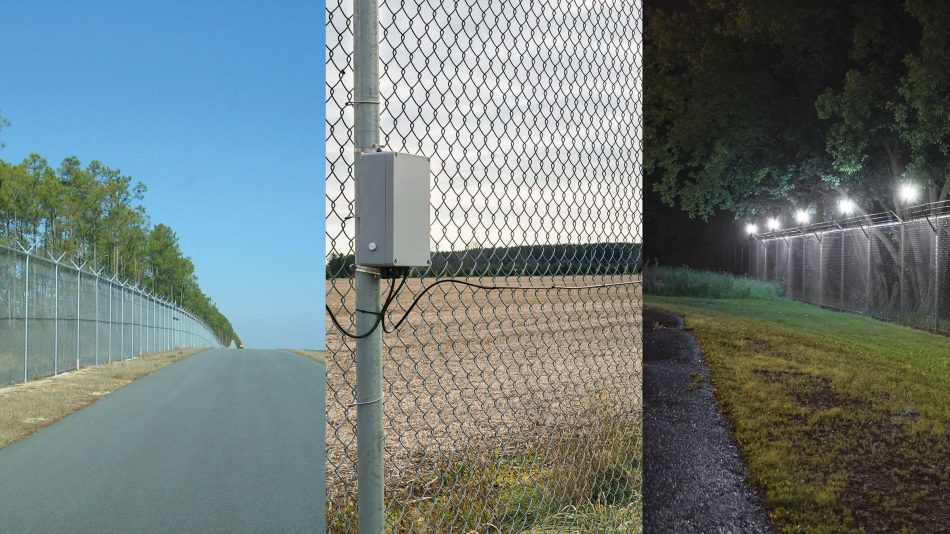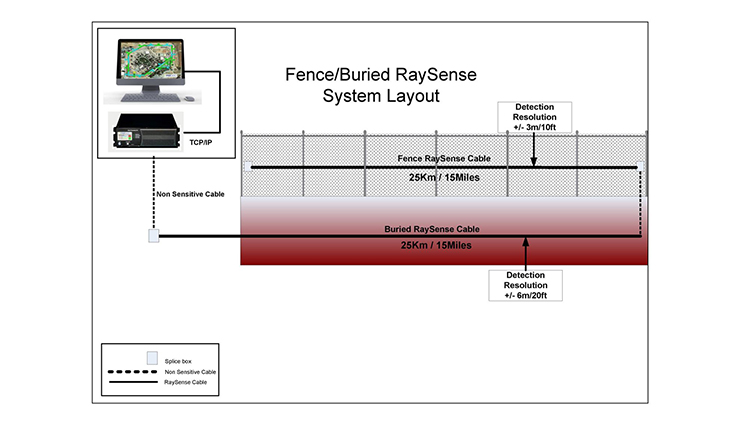Why You Should Invest in a Fiber Optic Security System: Why It’s the Future of Secure Networks
Why You Should Invest in a Fiber Optic Security System: Why It’s the Future of Secure Networks
Blog Article
Secure Your Residential Or Commercial Property With Reputable Fiber Optic Safety And Security Solutions
In an era where safety and security risks are progressively advanced, the demand for effective security options is extremely important. Fiber optic protection systems attract attention by providing extraordinary reliability and efficiency, leveraging advanced light transmission modern technology to enhance monitoring capabilities. These systems not just provide immunity to electromagnetic interference yet additionally promise long-term expense effectiveness through lowered upkeep needs. The decision to invest in such an option entails mindful factor to consider of numerous elements. Comprehending the complexities of fiber optic safety and security can light up the course to guarding your building better. What aspects should be checked out to maximize your investment?
Benefits of Fiber Optic Security
Fiber optic safety services use a series of advantages that make them progressively necessary in today's electronic landscape. One of one of the most substantial advantages is their remarkable bandwidth ability, which enables the transmission of large quantities of data over lengthy ranges without considerable signal degradation. This capability is especially useful for safety and security systems that count on high-def video clip monitoring and real-time surveillance.
Additionally, fiber optic cables are naturally a lot more safe and secure than typical copper circuitry. They are immune to electro-magnetic interference, making them less vulnerable to hacking or eavesdropping. This improved security is important for securing sensitive information and preserving the stability of security systems.
Furthermore, optical fiber are more durable and resistant to environmental variables, such as moisture and temperature variations, making sure long-lasting integrity and decreased maintenance costs. The lightweight nature of fiber optic cables additionally streamlines installment processes, enabling for higher flexibility in system layout.
Just How Fiber Optic Systems Work
In modern-day safety and security applications, the procedure of fiber optic systems counts on the concepts of light transmission with flexible glass or plastic fibers. These fibers are created to bring light signals over long ranges with minimal loss, making them perfect for transferring information connected to safety tracking. The core of the fiber, bordered by a cladding product, ensures that light signals continue to be contained within the core through a phenomenon referred to as total inner reflection.
When integrated into protection systems, fiber optic wires can transfer data from different sensors, such as electronic cameras, motion detectors, and alarm systems, to a main surveillance terminal. The high data transfer capability of optical fiber enables for the transmission of huge amounts of information simultaneously, making it possible for real-time monitoring and punctual action to potential risks.

Types of Fiber Optic Safety And Security Solutions
Various kinds of fiber optic safety and security options have emerged to boost surveillance and protection throughout different environments. One famous solution is fiber optic perimeter breach detection systems (PIDS), developed to check and protect property borders through the detection of vibrations and disruptions along fiber optic cables. These systems offer real-time alerts, making it possible for punctual feedbacks to unapproved accessibility efforts.
An additional reliable service why not try these out is fiber optic video security. This technology leverages high-definition electronic cameras connected by means of fiber optic cable televisions to transmit video clip information over long ranges without considerable loss of quality. This configuration is specifically helpful in extensive locations, such as airports and industrial sites, where conventional copper cords may falter.
In addition, fiber optic sensors are progressively utilized for environmental monitoring, finding changes in temperature level, stress, or acoustic signals that might show security breaches or unsafe conditions. These sensors supply high level of sensitivity and precision, making them excellent for essential infrastructure protection.

Installation and Upkeep Tips
Efficient setup and upkeep of fiber optic safety and security options are vital for guaranteeing their optimum efficiency and long life. To start with, it is crucial to prepare the installation meticulously, considering the format of the property and identifying possible vulnerabilities. Fiber optic wires must be routed firmly, avoiding sharp bends or spins that might jeopardize their stability. Make use of professional-grade adapters and rooms to guarantee durable connections and security from ecological factors.
During installment, it is recommended to conduct detailed screening of the system to validate that all elements are working correctly. Regular upkeep checks must be set up to inspect the fiber optic cables for any kind of signs of wear or damage, along with to make sure that connections remain safe and secure. Cleaning the connectors periodically is likewise essential to avoid signal loss as a result of dirt or particles.
Furthermore, maintaining an updated supply of installed components and their specifications can facilitate simpler troubleshooting and upgrades. By sticking to these installation and maintenance pointers, property proprietors can make the most of the effectiveness of their fiber optic safety and security services, ensuring a reputable protection versus prospective risks.
Comparing Expenses and Effectiveness
When examining fiber optic safety and security remedies, recognizing the equilibrium in between expenses look at here now and effectiveness becomes extremely important (security fibers). Organizations should consider the ahead of time investment, recurring maintenance costs, and the long-lasting value these systems supply. While fiber optic systems may need a greater first setup cost compared to traditional copper electrical wiring, their sturdiness and reduced susceptibility to electro-magnetic interference commonly equate to reduced upkeep prices gradually
Performance is another crucial variable; fiber optic protection systems supply improved data transmission speeds and enhanced dependability. They can cover bigger distances without signal destruction, making them perfect for expansive residential properties or remote locations. Moreover, the high data transfer capability sustains sophisticated protection applications, such as high-def video clip security and real-time tracking, which are necessary for extensive safety monitoring.
Inevitably, the option in between expense and effectiveness ought to be led by details safety and security requirements and take the chance of evaluations. Organizations has to assess their one-of-a-kind demands, thinking about variables like residential property size, security hazards, and technological innovations. By performing a complete cost-benefit evaluation, stakeholders can make informed choices that line up with their safety and security goals while guaranteeing an audio financial investment in fiber optic technology.
Final Thought
To conclude, fiber optic safety solutions provide significant benefits in terms of performance, integrity, and resistance to environmental disturbances. These systems improve monitoring capacities and boundary protection, making them a reliable choice for detailed defense. Preliminary installation prices may be greater, the long-lasting advantages, including reduced upkeep and exceptional performance, justify the investment. Ultimately, the fostering of fiber optic innovation stands for a forward-thinking strategy to safeguarding homes versus advancing protection threats.
Report this page